Product Overview
A Sockeye Salmon trophy fish mount from Gray Taxidermy is handcrafted in the U.S. We combine over fifty years of experience and skilled craftsmanship to ensure that your custom trophy mount exceeds your expectations of what a perfect custom fish mount should look like.
Our skilled artists take pride in capturing the rich beauty and realism of nature that each unique marine species bring. A fish mount from Gray Taxidermy will capture and commemorate a memory of a life time. We are able to transform raw materials into the ultimate representation of an angler's most notable achievement. Great attention to detail and true craftsmanship is our motto while we continue to serve customers around the world. Gray Taxidermy goes to great lengths to ensure the precise color and characteristics are resembled in your custom fish mount.
Before leaving our facility, each custom fish mount is thoroughly inspected to ensure our goal of 100% customer satisfaction.
If you want to complete your trophy wall with a unique action scene by adding baitfish along your mount, we have a variety of baitfish mounts to choose from.
Product Specs:
- Available Sizes: Call for Information
- Details: Fired-Enamel Glass Eye
- Product Options: Wood Plaque, Custom Base, 360°
-
We also offer elegant solid wood plaques to accompany yor trophy mount. Includes traditional wood plaque with sublimated personalized information. Just ask for more information
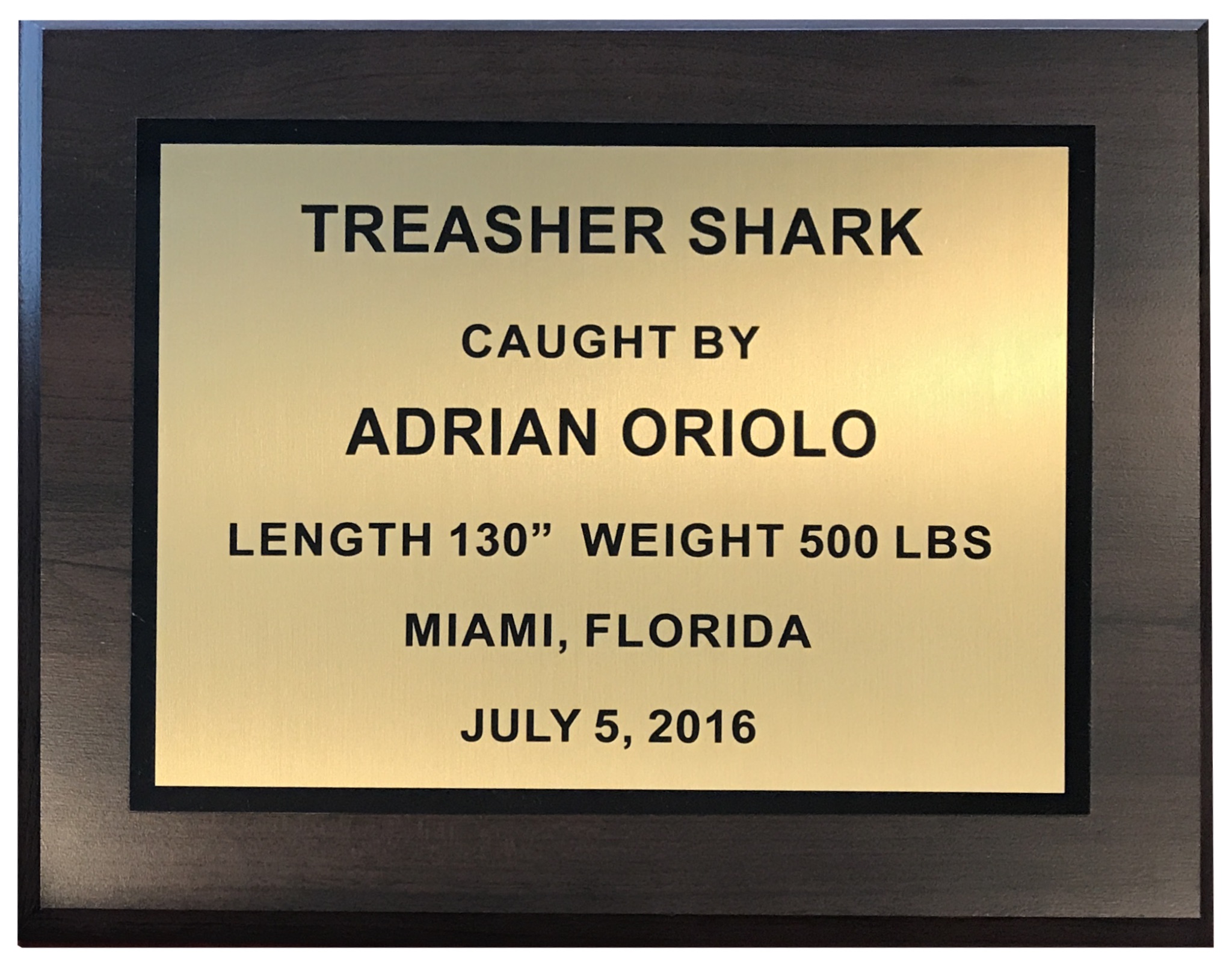
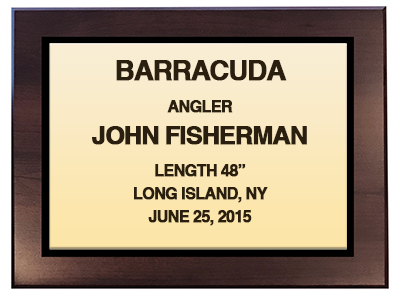 15 in x 12 in or 10 in x 8 in personalized wood plaque.
15 in x 12 in or 10 in x 8 in personalized wood plaque.
Color: Gold
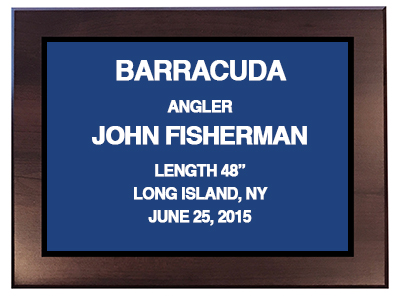 15 in x 12 in or 10 in x 8 in personalized wood plaque.
15 in x 12 in or 10 in x 8 in personalized wood plaque.
Color: BlueAvailable for all fish species
Species Information
Scientific Name: Oncorhynchus nerka
Size: Up to 33 in (84 cm)
5 to 15 lbs (2.3 to 7 kg)
Location & Habitat: Sockeye Salmon current range includes the U.S., South Africa, Europe, Guam, Japan, Lebanon, New Zealand, and the Philippines. The original range of the largemouth bass is most of the eastern half of the United States, however it is now found generally in the majority of the United States, including swamps, ponds, lakes, reservoirs, creeks and large rivers. The bass can even be found in estuaries. It prefers weedy oxbows and clears floodplain lakes. Since it is generally a warm water fish, it is found at depths of more than 18.8 feet.
During the winter, largemouth bass generally will move into deeper waters. In the spring, largemouths migrate into bays that have warmed up sooner than that of the main body of water. During the day, largemouth bass may cruise above aquatic plants at depths of 3.1-9.4 ft, or lie under lily pads or in the shade of overhanging trees, piers, or brush. In the evening hours, largemouth bass tend to move into shallow water to feed. After night falls, they return to deeper water, where they rest on the bottom under logs or trees. In cold temperate climates, largemouth bass generally move into deeper waters during the winter months followed by movement to warmer, shallow waters in the springtime.
Description: The name sockeye comes from a poor attempt to translate the word suk-kegh from British Columbia's native Coast Salish language. Suk-kegh means red fish.
The sockeye, also called red or blueback salmon, is among the smaller of the seven Pacific salmon species, but their succulent, bright-orange meat is prized above all others. They range in size from 24 to 33 inches (60 to 84 centimeters) in length and weigh between 5 and 15 pounds (2.3 to 7 kilograms). Like all other Pacific salmon, they are born in fresh water. However, sockeye require a lake nearby to rear in. Once hatched, juvenile sockeyes will stay in their natal habitat for up to three years, more than any other salmon. They then journey out to sea, where they grow rapidly, feeding mainly on zooplankton. They stay in the ocean for one to four years. Sea-going sockeyes have silver flanks with black speckles and a bluish top, giving them their "blueback" name.
However, as they return upriver to their spawning grounds, their bodies turn bright red and their heads take on a greenish color. Breeding-age males have a distinctive look, developing a humped back and hooked jaws filled with tiny, easily visible teeth. Males and females both die within a few weeks after spawning. Sockeyes are the third most abundant of the species of Pacific salmons and are a keystone in the North American commercial fisheries.
Did you know? Sockeye salmon meat gets its color from the orange krill they eat while in the ocean.
Contact us for any questions. you may have. [Complete Molding Process]

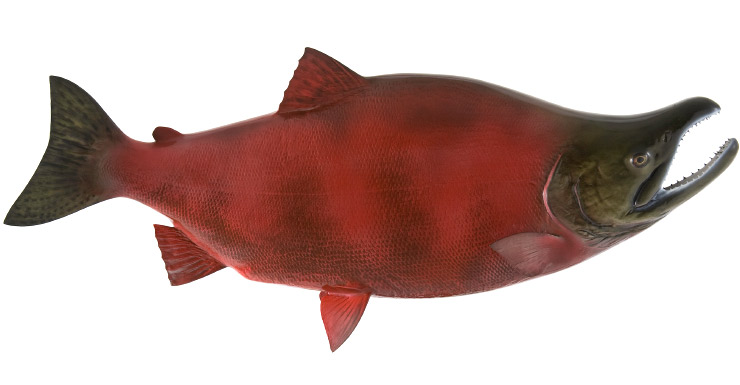

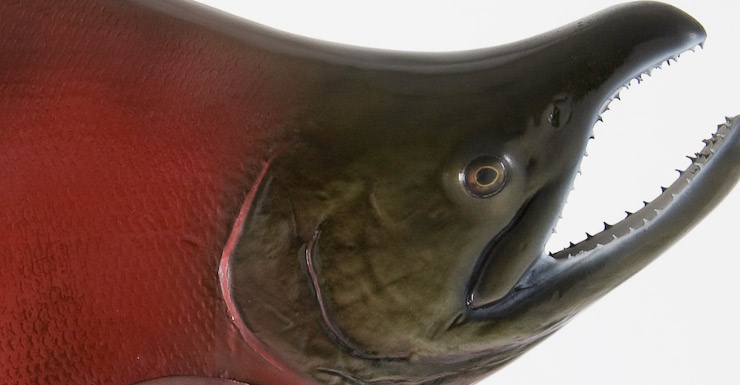

Call Now: 800.452.5501